Tanaka Kazuyuki Hamono
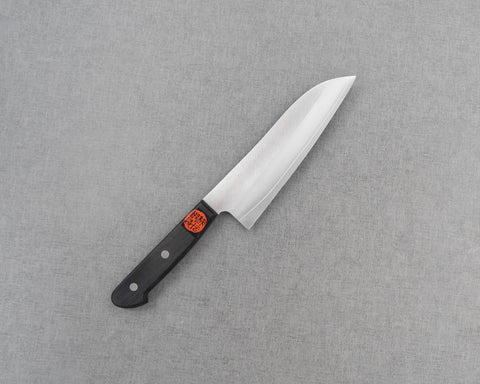
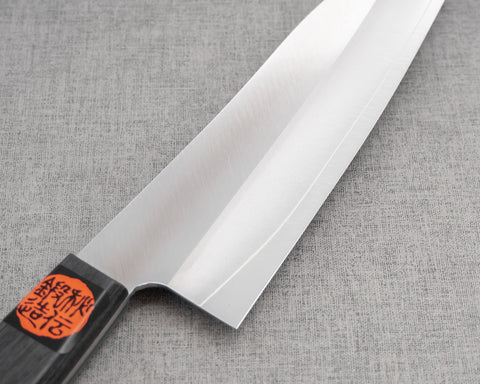
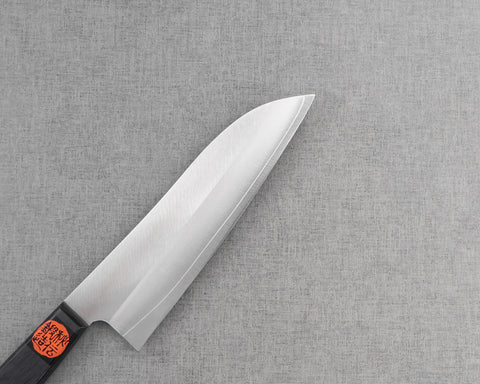
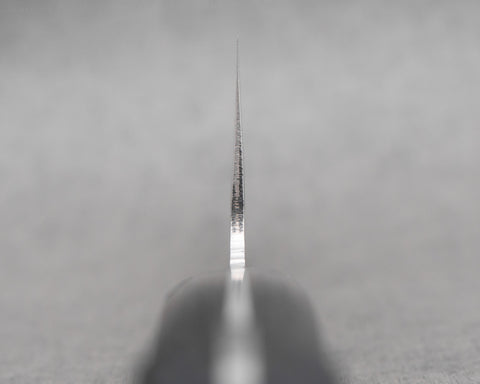
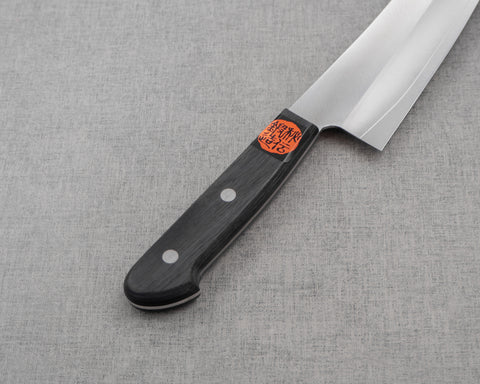
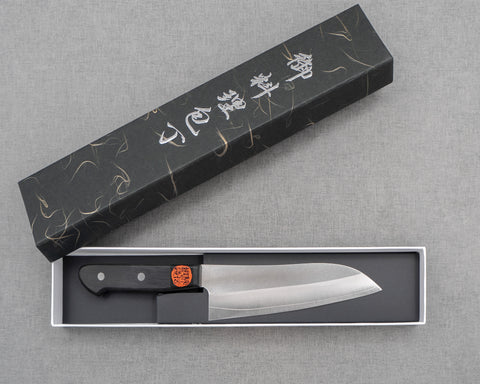
Shigeki Tanaka VG10 170mm Santoku with Western Black Pakkawood Handle
目前沒有提供取貨服務
This Santoku is handcrafted by Shigeki Tanaka with VG10 steel core, clad with stainless steel and heat-treated to 60-61 HRC. Despite being made of VG10, the knife demonstrates a remarkably thin edge and grinding as shown in the choil shot. Its straight shinogi line also adds a touch of gracefulness to the overall appearance.
Spec:
- Origin (Made in): Miki, Hyogo Prefecture, Japan
- Brand: Tanaka Kazuyuki Hamono
- Craftsman: Shigeki Tanaka
- Knife Type: Santoku
- Blade
- Construction: San Mai
- Grind: Double-edged Blade (50/50 Grind)
- Hagane (Core Steel): VG10
- Jigane (Cladding): Stainless Steel
- Hardness: 60-61 HRC
- Hand-forged, hand-grinded, hand-sharpened
- Blade Length: 170mm (6.7")
- Blade Height (at heel): 49mm
- Spine Thickness
- Above heel: 1.8mm
- Middle: 1.8mm
- Handle
- Shape: Western-shaped
- Material: Black Pakkawood
- Bolster: Stainless Steel
- Length: 118mm
- Overall Length: 295mm
- Weight: 163g (5.75oz)
- Hand chiseled mark: In Japanese Kanji "Craftsman Hideyuki's Work" (名匠 秀之作)
About Tanaka Kazuyuki Hamono 田中一之刃物
Tanaka's blade making started in the late Meiji era in 1904, by making sickles during the Russo-Japanese War. In 1946, Tanaka workshop started focusing more on kitchen knives, and in the year 2000 with the 3rd generation Kazuyuki Takana (田中 一之) on the throne, the family business changed its name to "Tanaka Kazuyuki Hamono" and has been using this name since. Kazuyuki's son - 4th generation blacksmith Shigeki Tanaka (田中 誠貴) - started making blades with his father in 1994. The father and son team, having learned traditional blade making in Fukui, started making knives with "Shigeki saku" and “Hideyuki saku” mark.
Care:
Wash and dry with a soft sponge, and safely store after use. Avoid cutting into bones, frozen foods, hard fruit pits.
Cutting Surface:
Recommended cutting surface: wood, rubberized boards and high-end composites, and quality plastics such as polyethylene make acceptable cutting surfaces, and will help protect and prolong knife’s edge. AVOID glass, metal, countertops, and other rigid, non-forgiving surfaces.
Sharpening:
We recommend sharpening all quality Japanese knives on whetstones, as we believe they yield the best results for your knives.
